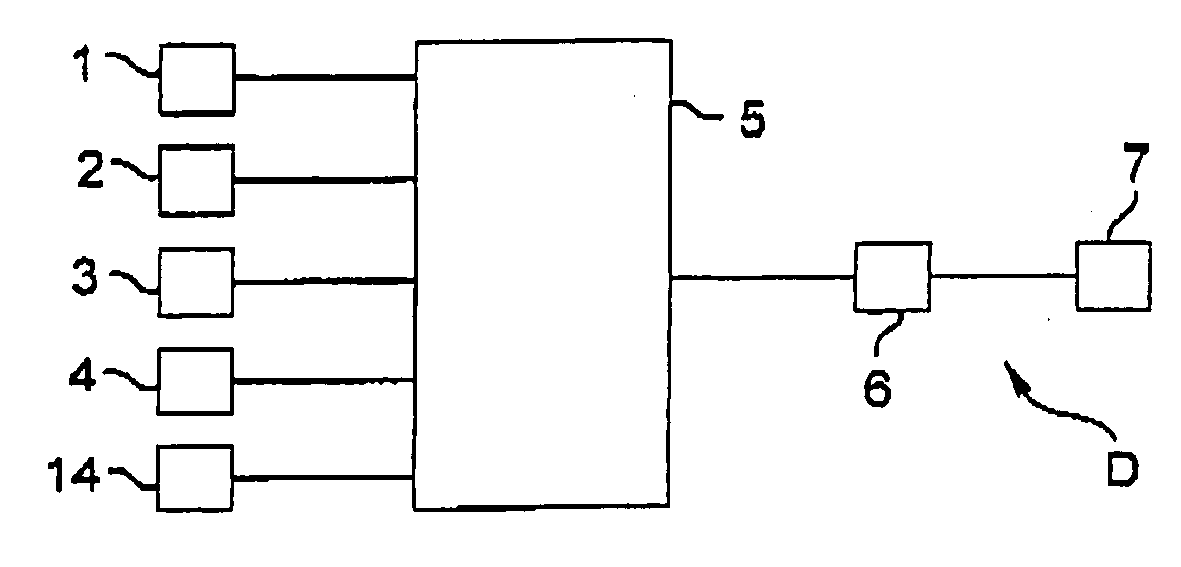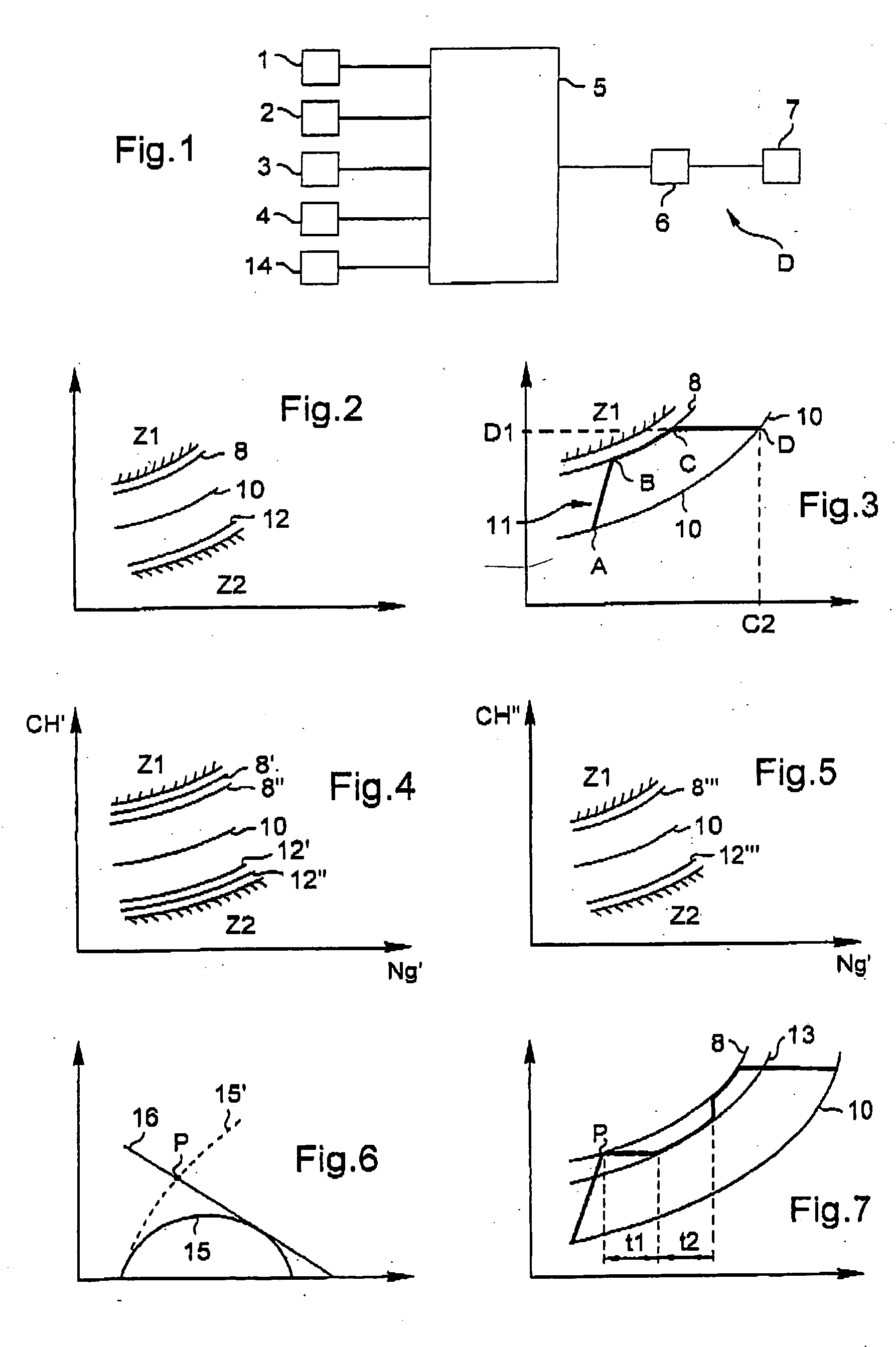Apparatus and a method for regulating the flow rate of fuel to a turboshaft engine in acceleration or in deceleration
a technology of turboshaft engine and flow rate, which is applied in the direction of engine control, turbine/propulsion fuel control, engine control, etc., can solve the problems of deterioration of the engine's turbine, reducing the air flow rate, and the speed of the rotation of the rotor falling off quickly, so as to avoid the pumping or flameout of the engine and increase safety
- Summary
- Abstract
- Description
- Claims
- Application Information
AI Technical Summary
Benefits of technology
Problems solved by technology
Method used
Image
Examples
first embodiment
[0066]FIG. 4 is a graph showing the regulation relationships in a In this embodiment, the main modulated flow rate is equal to a primary modulated flow rate.
[0067] The primary modulated flow rate is obtained using the following first relationship in which CH′ represents the primary modulated flow rate, CH represents the fuel flow rate delivered to the engine, P0 represents external pressure, T0 represents external temperature, α represents a first power and β represents a second power: CH′=CH(1013P0)α(288T0)β
[0068] The first and second powers α and β depend exclusively on the type of engine. Experience shows that fuel flow rate regulation is optimized during acceleration with a first power α lying in the range 0.9 to 1.05, and a second power β lying in the range 0.6 to 0.9.
[0069] In addition, when the main modulated flow rate is equal to said primary modulated flow rate, there exist a plurality of optimum regulation relationships in acceleration, depending on altitude, e.g. a h...
second embodiment
[0070] In contrast, in a second embodiment, described with reference to FIG. 5, when the main modulated flow rate is equal to a secondary modulated flow rate, single optimum regulation relationships 8′″ and 12′″ are obtained respectively in acceleration or in deceleration and that are valid regardless of altitude.
[0071] Under such conditions, the secondary modulated flow rate is obtained using the following second relationship in which CH″ represents the secondary modulated flow rate, CH′ the primary modulated flow rate, and T0 the external temperature: CH″=CH′(288T0)
[0072] The apparatus described above provides good control over the fuel flow rate to a turboshaft engine. Nevertheless, the optimum regulation relationship(s) is / are established on the basis of tests performed on an engine in good condition. With wear, engine performance can become degraded, thereby changing the shapes of the shaded zones Z1 and Z2. As a result, it becomes possible for pumping or engine flameout to o...
PUM
 Login to View More
Login to View More Abstract
Description
Claims
Application Information
 Login to View More
Login to View More - R&D
- Intellectual Property
- Life Sciences
- Materials
- Tech Scout
- Unparalleled Data Quality
- Higher Quality Content
- 60% Fewer Hallucinations
Browse by: Latest US Patents, China's latest patents, Technical Efficacy Thesaurus, Application Domain, Technology Topic, Popular Technical Reports.
© 2025 PatSnap. All rights reserved.Legal|Privacy policy|Modern Slavery Act Transparency Statement|Sitemap|About US| Contact US: help@patsnap.com



